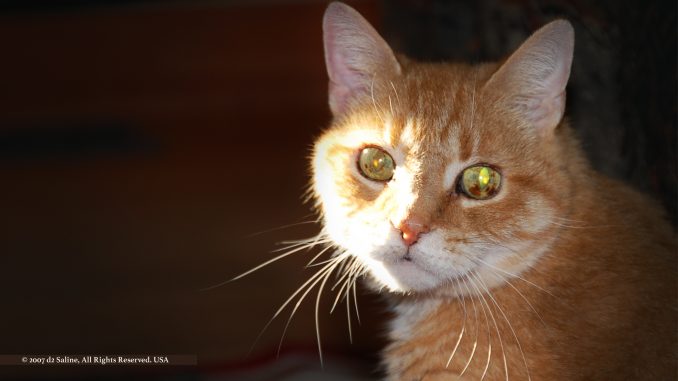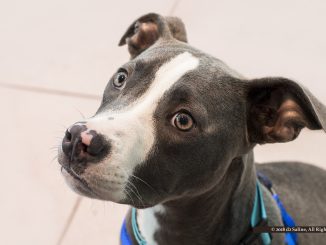
You don’t have to be “a cat person” to get the importance of making sure that medications are taken as prescribed. Simple human decency if not compassion will do.
Neither do you have to imagine dire injury, severe illness, or an aging feline to appreciate the need for such medications. While it’s true that hyperthyroidism is the most common ailment afflicting cats, these furry friends also commonly need treatments for arthritis and heart disease. They’re even prescribed a version of what we know as Prozac to treat inappropriate behaviors including “separation anxiety, urine-spraying, self-mutilation,” and aggression. [1,2,3,4]
Dr Steve Jensen empathizes. As proprietor of Jensen’s Community Pharmacy here in Saline, he sees “a lot of interesting challenges, unique dosage forms, flavors needed to get a pet to take medicine.” Prozac is difficult, for example, because it is quite bitter and that affects palatability. [5]
Offered the suggestion of hiding such pills in food or treats, Dr Jensen easily recalled a recent experience that one customer brought to him for a dog that had been prescribed tramadol. “It has a disgusting taste. The dog stopped taking it in cheese and treats; he’d figured it out. Cats are even more adept at eating the pill packet and leaving the pill.” [6]
Other challenges are a matter of practicality for the caretakers of these animals. “Someone came in the other day for a cat with heart disease,” he said. “There were three different meds, given twice a day. The prescription called for cutting small tablets into quarters. The customer needed help making that happen.”
A powerful alternative to all of the above is called compounding.
The American Pharmacists Association defines “compounding” as “the creation of a pharmaceutical preparation — a drug — by a licensed pharmacist to meet the unique needs of an individual patient (either human or animal) when a commercially available drug does not meet those needs. A patient may not be able to tolerate the commercially available drug, the exact preparation needed may not be commercially available, or a patient may require a drug that is currently in shortage or discontinued.” [7]
Up until the mass production of pharmaceuticals in the 1950s, virtually all prescriptions were compounded. The coming of standardized dosings led to commoditization of average doses at the sacrifice of the more exact levels needed by some patients for some medications. For example, fractional-pill amounts of the drug Warfarin. [8]
While most pharmacies have relinquished compounding to online sources, Jensen’s Pharmacy in Eastgate Saline has made it a speciality. Compounding for both people and pets, Dr Jensen finds the majority of his animal-related work in applications for dogs and cats. But he also cited work he’d done for a goose and “not long ago, for a farret. We also took care of a goat not long ago.”
He works with “really small capsules,” caplets, and liquid suspensions in treatment forms.
As a self-described “cat guy,” he is quite familiar with tastes that appeal to felines, including tuna, salmon, and sardines. For the dog who needed tramadol, “I did a transdermal to the ear flap for delivery to the blood stream. You’re worried enough when your dog is sick, so you shouldn’t have to fight your dog every day to take the medication.”
It’s a very specialized service with its own network of practitioners who share ideas with one another on a routine basis. It’s also an option that gives veterinarians better control over animal care by working with someone local — readily accessible, accountable. It also means that the pharmacy here can give the vet guidance where needed and provide follow-up.
Painful as it is to have a loved pet fall ill, at least the process of helping it get better may not need to be exacerbated by wrestling matches centered on taking medications.
References
- “Hyperthyroidism in Cats” (January 2017) Cornell University, College of Veterinary Medicine.
- “7 Signs of Arthritis in Cats” Lorie Huston DVM, PetMD.
- “Diagnosis: Heart Disease” Cornell University, College of Veterinary Medicine.
- “The Effects of Prozac Given to Cats” Jane Meggitt, The Nest.
- Jensen’s Community Pharmacy (home page).
- “Tramadol for Dogs: Uses and Side Effects” Anna Burke (November 30, 2016) American Kennel Club (AKC).
- “Frequently Asked Questions About Pharmaceutical Compounding” American Pharmaceutical Association (APhA).
- “A Patient’s Guide to Taking Warfarin” American Heart Association.



